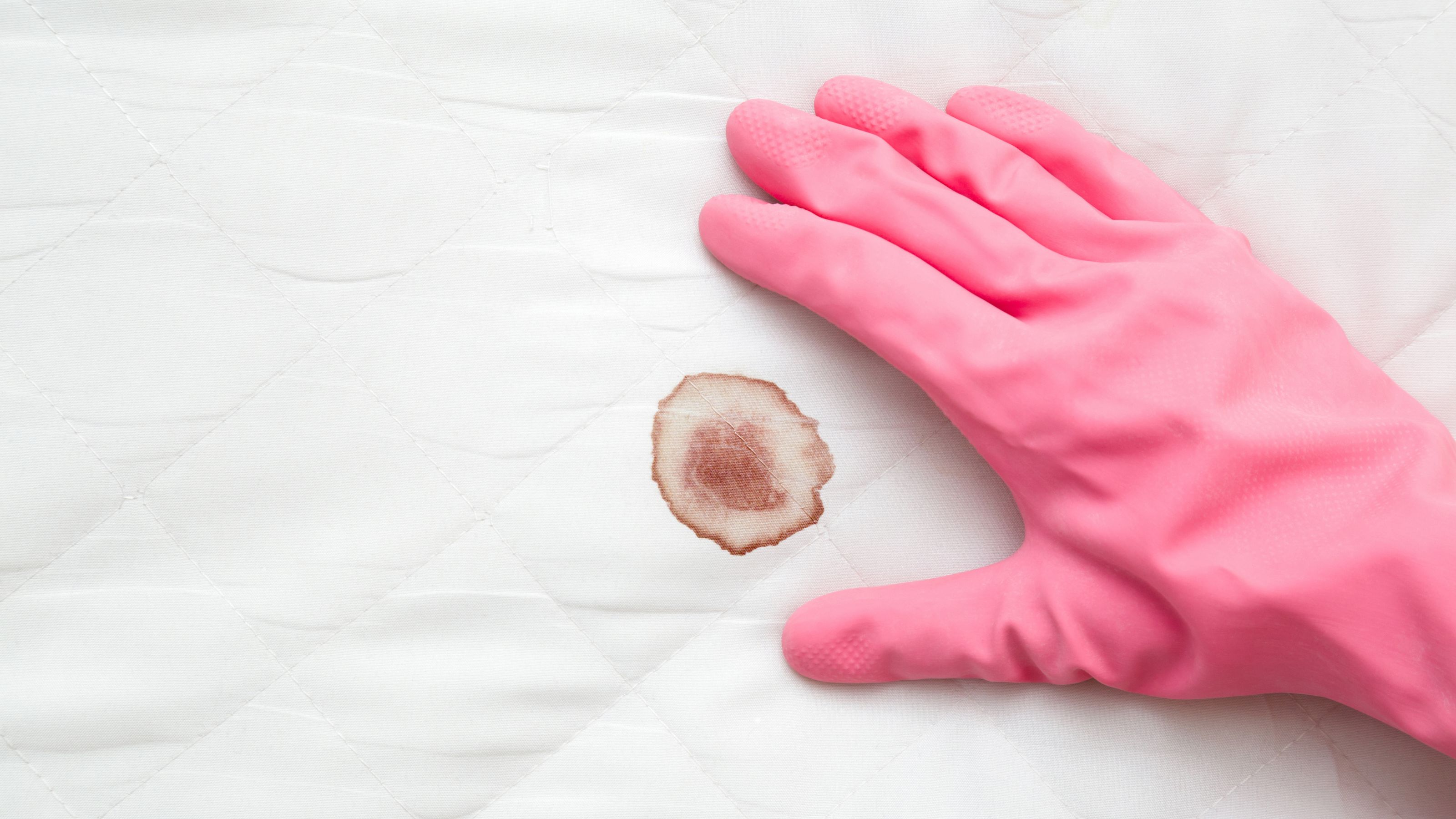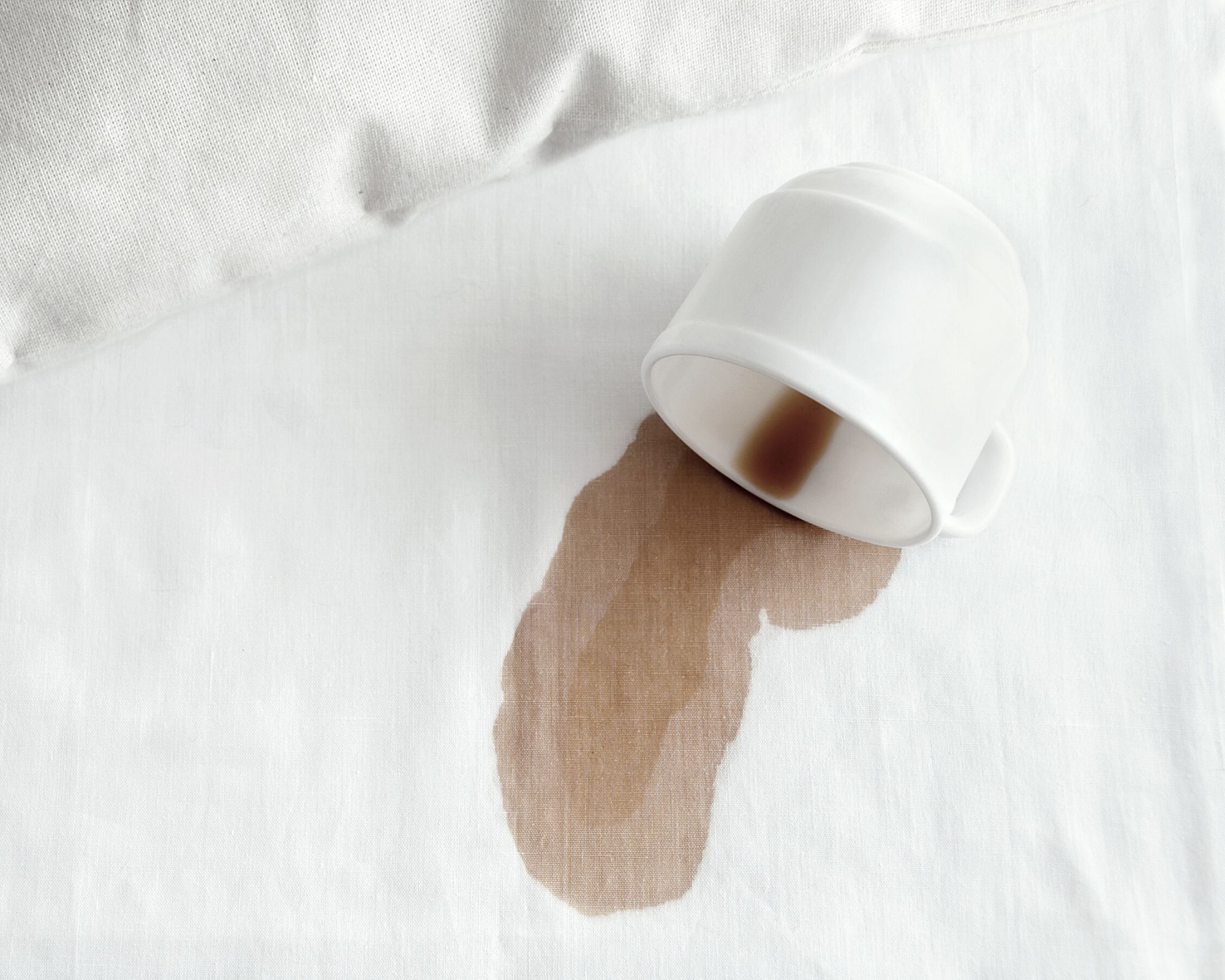

Hands up if washing your mattress protector isn't part of your bi-weekly bed cleaning routine. Yup, most us of might not clean our mattress protectors as often as we should. And when you do, you likely just throw it in the washing machine. But whether you wash your mattress protector once a week or once a month, it doesn't matter if you don't know how to do it properly.
Mattress protectors are designed to guard your bed against accidental spills, stains, and crumbs (breakfast-in-bed lovers you know who you are), as well as the more nasty bacteria, dust mites, and bed bugs. So even if it looks clean, you can imagine how grimy they actually get. You shouldn't just be looking for significant marks, fake tan stains, and odors to trigger a little TLC.
To help you keep your bed as clean as poss, I've spoken to the experts and put together a simple five-step guide, including everything you need to know and a few useful tools, because hygiene, obvi.
How to wash a mattress protector?
Good to know

The good news is that you don't need to take your mattress protector to a specialist service or spend money on new cleaning supplies, you just need a few household items, and I'm presuming you have a washing machine.
Note: Prior to throwing your bedding in the washer, you'll want to check it for any damage, like holes or tears. Using your washing machine to clean your cover without glancing over it first could impair the item and may even break your appliance in the process.
Here's what you'll need
- A handheld vac or a vacuum cleaner with a brush attachment
- Mild laundry detergent, like Method's eco-friendly detergent
- A soft cleaning cloth (from Amazon)
- Your washing machine
1. Remove dirt and debris
The first step to cleaning your mattress protector is to strip the bed and clean it manually of any dirt and debris. Yes, pretty self-explanatory, but also quite crucial. "This includes sheets, blankets, pillows, and anything else that might be on the surface," says Martin Seeley, CEO and founder of Mattress Next Day. "Then you can use a cordless vacuum cleaner with a brush attachment to gently remove any crumbs that may be on the surface." Think pet hair, dust, and dirt from grimy feet.
2. Spot clean and pre-treat stains
Next, you'll want to do any pre-stain treatments. "Once you've vacuumed the surface, you can start spot-cleaning any areas that seem to be particularly dirty," says Seeley. "You can use a mild detergent and a soft cloth for this."
Get small space home decor ideas, celeb inspiration, DIY tips and more, straight to your inbox!
Why? "If there are serious stains, it’s better to work on them before throwing the mattress protector into the washing machine," adds Alex Savy, a certified sleep science coach and the Founder of SleepingOcean.com. "If you're removing blood from bedding, the stain needs to be pre-soaked in cold water mixed with a bit of salt. When dealing with urine stains, it’s better to soak the mattress protector in a mix of lukewarm water, dish soap, and half a tablespoon of ammonia solution."
Tony Klespis, a certified sleep science coach and sleep accessories editor at Mattress Clarity says that you can "use a mixture of equal parts hydrogen peroxide, dish soap, and water in a spray bottle, and simply spray this on your mattress protector and blot it out to tackle stains."
3. Target lingering odors with baking soda
If your mattress protector is particularly smelly, Klespis recommends using "baking soda to clean and get rid of any odors.'' Simply sprinkle it over the surface of the mattress cover and spray it with water before leaving it to soak for a good few hours — we love Arm & Hammer's Pure Baking Soda which you can pick up from Amazon.
4. Machine wash (on the right setting)
If you have a washing machine, then great, you can easily put your protector in the drum with the rest of your bedding (if they're the same color, of course).
Just like you'd check the labels on your clothing when doing laundry, you should also do your due diligence when washing your mattress protector. Depending on the brand and type, there will be different care instructions you'll want to follow in order to maintain its quality. The label will tell you the temperature and which drying cycle will work best. Otherwise, Seeley advises using a "gentle cycle and mild detergent." Make sure to avoid using any bleach or overly hot water, especially if you have a waterproof mattress protector, as this might damage the fabric and break down its protective plastic layers.
If you don't happen to have a washing machine, then no problem. You can hand wash a mattress protector, too. In fact, Brad Hall, co-founder and CEO of SONU Sleep actually says a cold water wash is better. "You want to clean your mattress protector carefully because of the important job it does," notes Hall. "Hand washing your mattress protector in cold water is the best way to tackle tough stains."
5. Let it air dry completely
Our experts state that no matter which method you choose to wash your mattress protector, you should make sure it is completely dry before putting it away or back on the bed. Once it's all washed, "let it air dry completely before fitting it back onto your mattress in order to prevent bacteria buildup," says Hall. And don't use a dryer, if possible. Hall also adds that the heat from the dryer could not only "shrink your mattress protector, but also deteriorate the moisture-wicking elements a mattress protector needs to do its job." Similarly, don't iron your mattress protector (it shouldn't be too wrinkly anyway), as the excessive heat will damage the waterproof lining.
How often should you clean a mattress protector?
The reason you really need a mattress protector is to keep your bed clean, but this added layer of security needs to be taken care of, too. Experts advise you should wash your mattress protector about once a month, minimum. Personally, I put it in with the rest of my bedding, every two weeks. I regularly wear fake tan, and can't get enough of white bed sheets (I need to wash out stains more than the average person). If you suffer from allergies, you may want to increase the frequency to every couple of weeks.
Psst! If peeling off your protector has revealed some MEGA stains on your bed, we've got a whole guide on how to clean a mattress, too.

Louise is the Ecommerce Editor at Real Homes, specialising in sleep content so you can wind-down well. With prior PR experience working for a luxury bedding brand, Louise knows the importance of getting a great night’s sleep. Joining the other side of the desk as a full-time journo, Louise brings her bedding expertise to writing sleep buying guides, reviews, and news for Real Homes. Aside from helping readers get essential shut eye, Louise also writes shopping content for homeware items that’ll add a decorative edge to your space. With an eye for design that won’t snooze on style, but a budget that won’t quite stretch, Louise loves nothing more than a modern designer dupe. From coloured glassware to contemporary storage, anything to upgrade the bare space of her rented East London flat.